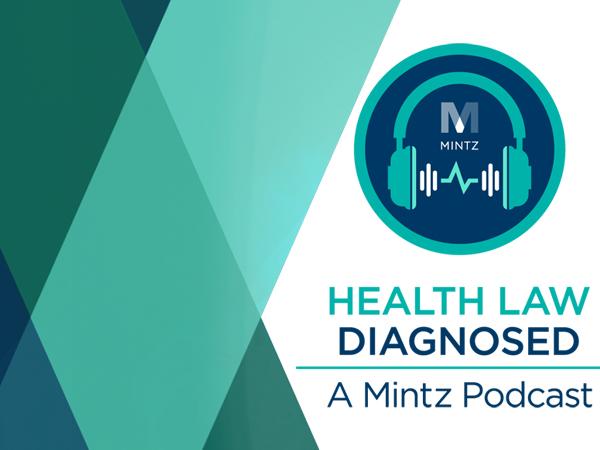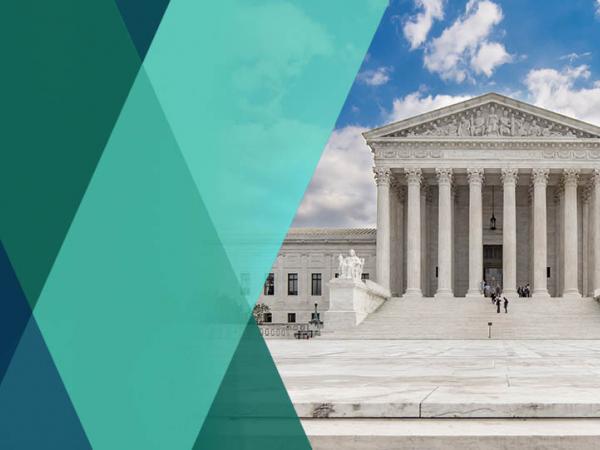
Health Care
Viewpoints
Filter by:
What to Expect at FDA Following Commissioner Gottlieb's Departure
March 6, 2019 | Blog
On March 5, 2019, FDA Commissioner Scott Gottlieb announced his resignation. The physician and venture capitalist, for whom this was a second stint at the FDA, intends to leave the agency in about a month to spend more time with his family. In this post, Aaron Josephson reflects on Dr. Gottlieb's time leading the FDA and its future after his departure.
Read more
ML Strategies Health Care Preview - Week of March 4, 2019
March 4, 2019 | Blog
As Congress continues its oversight of prescription drug prices, the Senate Finance Committee will also examine abuse and neglect at nursing homes. Meanwhile, the House of Representatives is looking at ways to lower health care costs as it keeps it eye on lowering drug costs as well. The focus and intensity around drug pricing is not expected to diminish anytime soon. For our complete health care preview...
Read more
Five Takeaways from the Senate Finance Committee’s Hearing on Drug Pricing
March 4, 2019 | Blog
On February 26, 2019, the Senate Finance Committee heard testimony from top executives representing seven high-profile drug manufacturers. This hearing was the second to examine drug pricing in America. The Committee’s questions to executives from Pfizer, Merck & Co., Johnson & Johnson, AbbVie, Bristol-Myers Squibb, Sanofi, and AstraZeneca were aimed at identifying why already-high drug prices continue to climb and what can be done to stop the trend. The hearing comes during a period of increasing pressure on pharmaceutical manufacturers and others in the drug supply chain to improve patient access to drugs, increase transparency in drug pricing, and stop the trend of significant price increases. This type of high profile hearing just confirms that these pressures will continue, and as a number of proposals to address drug prices work their way through Congress and multiple federal agencies, the discussion around drug pricing reforms will undoubtedly continue. Following on ML Strategies’ coverage of the Senate hearing, below are a handful of key takeaways from the hearing.
Read more
March 2019: Where Are We Now With 340B?
March 1, 2019 | Blog
What might 2019 mean for the 340B program? This post addresses the on-going litigation over the OPPS Medicare payment reduction for 340B drugs, ceiling price validation, and state initiatives related to the 340B program.
Read more
What Does the Future Hold for Drug Pricing?
February 28, 2019 | Blog
On Tuesday, executives from seven of the largest pharmaceutical companies testified before the Senate Finance Committee on rising prescription drug prices. While the hearing was expected to be packed with fireworks as Senators of both parties grilled the nation's top pharmaceutical executives, it was largely uneventful.
Read more
Device Modernization Series: FDA’s Proposed De Novo Regulation
February 28, 2019 | Blog
In our first Device Modernization series post, we discussed how FDA is proposing to modernize the 510(k) review program. FDA also recently issued a proposed regulation for the De Novo program and linked that proposed regulation to 510(k) modernization efforts as part of a broader strategy to improve device safety.
The proposed De Novo regulation, issued December 5, 2018, would codify into regulation many of the policy and programmatic features of the De Novo program that are currently outlined in guidance documents. Because guidance is nonbinding, FDA is seeking through the proposed regulation to provide structure, clarity, and transparency to the De Novo process in a way that would be binding on De Novo submitters.
Read more
The proposed De Novo regulation, issued December 5, 2018, would codify into regulation many of the policy and programmatic features of the De Novo program that are currently outlined in guidance documents. Because guidance is nonbinding, FDA is seeking through the proposed regulation to provide structure, clarity, and transparency to the De Novo process in a way that would be binding on De Novo submitters.
Hefty Fine is a Reminder of FCC’s Purview Over Certain Personal Hygiene and Wellness Devices
February 27, 2019 | Blog
Do you manufacture, import, or market personal hygiene and wellness devices sold in drugstores? If so, you may be focused on U.S. Food and Drug Administration (FDA) compliance, but may not have considered the requirements of another Federal regulatory agency: the Federal Communications Commission (FCC). Manufacturing, importing, and/or marketing non-compliant personal hygiene, wellness and similar devices may violate the FCC’s rules.
Read more
ML Strategies Health Care Preview - Week of February 25th
February 26, 2019 | Blog
This week, Congress will dive into rising prescription drug costs with a hearing in the Senate Finance Committee. The hearing will feature seven top drug manufacturer executives and will focus on rising drug prices and transparency, among other topics. The Finance Committee is also looking into insulin price increases, joining the House Oversight Committee in investigating a number of prescription drug price increases. We cover this and more in this week's preview, which you can find by...
Read more
Device Modernization Series: FDA’s Changes to the 510(k) Program
February 21, 2019 | Blog
In our “FDA 2018 Year in Review (and a Few Thoughts on 2019)” post and recent webinar, we observed that we may look back at 2018 as the beginning of the end for the 510(k) program as it has existed since the 1976 Medical Device Amendments to the Federal Food, Drug, and Cosmetic Act. The 510(k) pathway has been scrutinized for years and among the most damning criticisms leveled against it is that it is a loophole that lets unsafe products on the market by allowing manufacturers to, in most cases, avoid clinical testing. As long as the Federal Food, Drug, and Cosmetic Act allows for 510(k)s, though, FDA has to make the review program work, so the agency is looking for ways to improve the safety of 510(k)-cleared devices rather than burying its head in the sand.
Read more
CMS Continues to Combat the Opioid Epidemic
February 21, 2019 | Blog | By Bridgette Keller
Last month, we highlighted a few of the changes CMS proposes in Parts I and II of the Advance Notice and Draft Call Letter. Here, we take a look at CMS’s next steps to combat opioid misuse. CMS is rolling out several new initiatives in this space this year and next.
Read more
Independent Laboratory Settles Medical Necessity Allegations
February 20, 2019 | Blog | By Karen Lovitch, Cassandra Paolillo
The Department of Justice (DOJ) recently announced a $1.99 million False Claims Act (FCA) settlement with GenomeDx Biosciences Corp. (“GenomeDx”), a laboratory headquartered in Vancouver, British Columbia with operations in San Diego. The matter arose as the result of a qui tam case brought by two former employees in September 2017.
Read more
Regulators Look to Increase Interoperability and Patient Access to Health Data
February 14, 2019 | Blog
Federal regulators are flexing their regulatory muscle to accelerate a long-desired but often elusive goal: the interoperability of health information technology (health IT) systems. Interoperability refers to the ability of different health IT systems, including electronic health record (EHR) systems, to meaningfully communicate with one another.
Read more
A Tale of Two False Claims Act Settlements Involving EHR Vendors
February 13, 2019 | Blog | By Karen Lovitch
Last week the Department of Justice (DOJ) announced a $57 million settlement with electronic health record (EHR) software vendor Greenway Health LLC (Greenway). According to DOJ, Greenway violated the False Claims Act (FCA) by fraudulently obtaining certification of its software and misrepresenting its software’s capabilities to customers, thereby causing its customers to submit false attestations of “meaningful use” of EHR technology when seeking to qualify for incentive payments available through the Medicare and Medicaid EHR Incentive Program. The complaint also alleged that Greenway illegally paid kickbacks to customer in exchange for recommendations to prospective new customers.
Read more
As CMS Lifts HHA Medicare Provider Enrollment Moratorium, States Continue to Limit HHA Licenses
February 12, 2019 | Blog | By Lauren Moldawer
As of January 30, 2019, CMS lifted its temporary provider enrollment moratoria for home health agencies in Florida, Illinois, Michigan and Texas. The Enrollment Moratorium had prevented new home health agencies in these states from enrolling in Medicare and Medicaid.
Read more
45 States Now Have Biosimilar Substitution Laws
February 11, 2019 | Blog
Forty-five states and Puerto Rico have now enacted laws that permit or require pharmacists to dispense an interchangeable biological product in certain situations. The remaining states that have not yet passed legislation on the topic are: Alabama, Arkansas, Maine, Mississippi, Oklahoma, and the District of Columbia. We have been tracking and summarizing these laws over the past three years, and you can find our updated chart...
Read more
ML Strategies Health Care Preview - Week of February 11, 2019
February 11, 2019 | Blog
Congress and the Administration are staring down the prospects of another government shutdown with talks breaking down over the weekend on a border funding deal. Democrats in the House continue to aggressively pursue drug pricing legislation, and are also touting reforms to the ACA to counteract actions taken by the Administration. Once we're beyond the shutdown, assuming a long-term deal can be struck, legislative direction on key issues should become clear. We cover this and more in this week's preview, which you can find...
Read more
How to Safely and Productively Promote an FDA-Regulated Medical Product
February 8, 2019 | Blog
On January 9, 2019, AdvaMed announced revisions to its Code of Ethics. As any medical product business knows, compliance with the AdvaMed Code of Ethics (the “Code”) is essential. While the Code is voluntary, many states require medical product manufacturers and companies to adopt compliance programs consistent with the Code. The amendments will be effective January 1, 2020.
Read more
Save the Date! Mintz Pharmacy & Pharmaceutical Industry Summit on May 2, 2019
February 8, 2019 | Blog
Mintz/ML Strategies’ 4th Annual Pharmacy & Pharmaceutical Industry Summit has been scheduled for Thursday, May 2, 2019 – mark your calendars! People from across the industry will gather for one day to share insights about issues that the players in this complex marketplace are tackling.
Read more
FCA Defendant Petitions Supreme Court, Argues Statute is Unconstitutional
February 7, 2019 | Blog | By Samantha Kingsbury
As many of our readers know, we have been closely following the Polukoff False Claims Act (FCA) qui tam case, which is based on allegations that certain heart procedures performed by a cardiologist were not medically necessary. The latest development in this case came a few weeks ago, when defendants Intermountain Health Care, Inc. and IHC Health Services, Inc. d/b/a Intermountain Medical Center (Intermountain) filed a Petition for a Writ of Certiorari with the United States Supreme Court. The Petition raised two issues: (1) whether a court may create an exception to Federal Rule of Civil Procedure 9(b)’s particularity requirement when the plaintiff claims that only the defendant possesses the information needed to satisfy that requirement; and (2) whether the False Claims Act’s qui tam provisions violate the Appointments Clause of Article II of the Constitution.
Read more
OIG Advisory Opinion Allows Smartphone Loan for Needy Patients Taking Digital Drug
February 6, 2019 | Blog | By Karen Lovitch
Last week, the Office of the Inspector General for the Department of Health and Human Services (OIG) issued a favorable Advisory Opinion regarding a proposal by a pharmaceutical manufacturer (Manufacturer) to loan a limited-use smartphone to financially needy patients taking the digital version of an antipsychotic drug. The OIG concluded that the arrangement would not constitute grounds for the imposition of civil monetary penalties (CMPs) under the prohibition on beneficiary inducement (the “Beneficiary Inducement CMP”) or administrative sanctions under the Anti-Kickback Statute (AKS).
Read more
Explore Other Viewpoints:
- Data Centers & Digital Infrastructure
- AI: The Washington Report
- Antitrust
- Appellate
- Arbitration, Mediation & Alternate Dispute Resolution
- Artificial Intelligence
- Awards
- Bankruptcy & Restructuring
- California Land Use
- Cannabis
- Class Action
- Complex Commercial Litigation
- Construction
- Consumer Product Safety
- Corporate Governance (ESG)
- Cross-Border Asset Recovery
- DEI Legal Developments
- Debt Financing
- Direct Investing (M&A)
- Diversity
- EB-5 Financing
- Education & Nonprofits
- Employment
- EnforceMintz
- Environmental (ESG)
- Environmental Enforcement Defense
- Environmental Law
- Environmental, Social, and Corporate Governance (ESG)
- FDA Regulatory
- False Claims Act
- Federal Circuit Appeals
- Financial Institution Litigation
- Government Law
- Growth Equity
- Health Care
- Health Care Compliance, Fraud and Abuse, & Regulatory Counseling
- Health Care Enforcement & Investigations
- Health Care Transactions
- Health Information Privacy & Security
- IP Due Diligence
- IPRs & Other Post Grant Proceedings
- Immigration
- Impacts of a New US Administration
- Insolvency & Creditor Rights Litigation
- Institutional Investor Class Action Recovery
- Insurance & Financial Services
- Insurance Consulting & Risk Management
- Insurance and Reinsurance Problem-Solving & Dispute Resolution
- Intellectual Property
- Investment Funds
- Israel
- Licensing & Technology Transactions
- Life Sciences
- Litigation & Investigations
- M&A Litigation
- ML Strategies
- Medicare, Medicaid and Commercial Coverage & Reimbursement
- Mergers & Acquisitions
- Patent Litigation
- Patent Prosecution & Strategic Counseling
- Pharmacy Benefits and PBM Contracting
- Portfolio Companies
- Privacy & Cybersecurity
- Private Client
- Private Equity
- Pro Bono
- Probate & Fiduciary Litigation
- Products Liability & Complex Tort
- Projects & Infrastructure
- Public Finance
- Real Estate Litigation
- Real Estate Transactions
- Real Estate, Construction & Infrastructure
- Retail & Consumer Products
- Securities & Capital Markets
- Securities Litigation
- Social (ESG)
- Special Purpose Acquisition Company (SPACs)
- Sports & Entertainment
- State Attorneys General
- Strategic IP Monetization & Licensing
- Sustainable Energy & Infrastructure
- Tax
- Technology
- Technology, Communications & Media
- Technology, Communications & Media Litigation
- Trade Secrets
- Trademark & Copyright
- Trademark Litigation
- Unified Patent Court (UPC)
- Value-Based Care
- Venture Capital & Emerging Companies
- White Collar Defense & Government Investigations
- Women's Health and Technology









